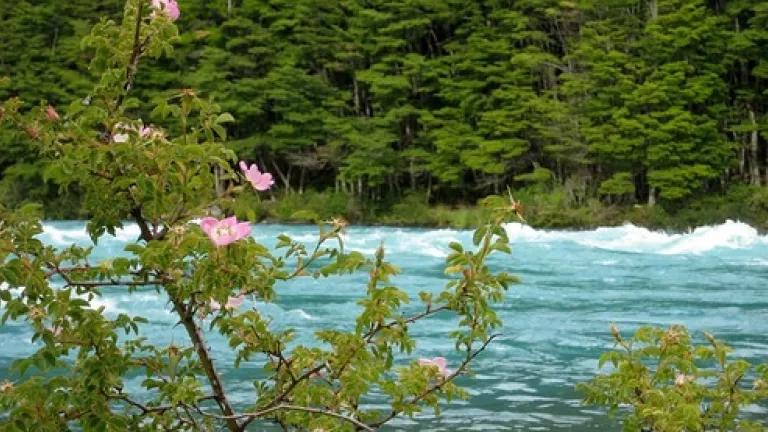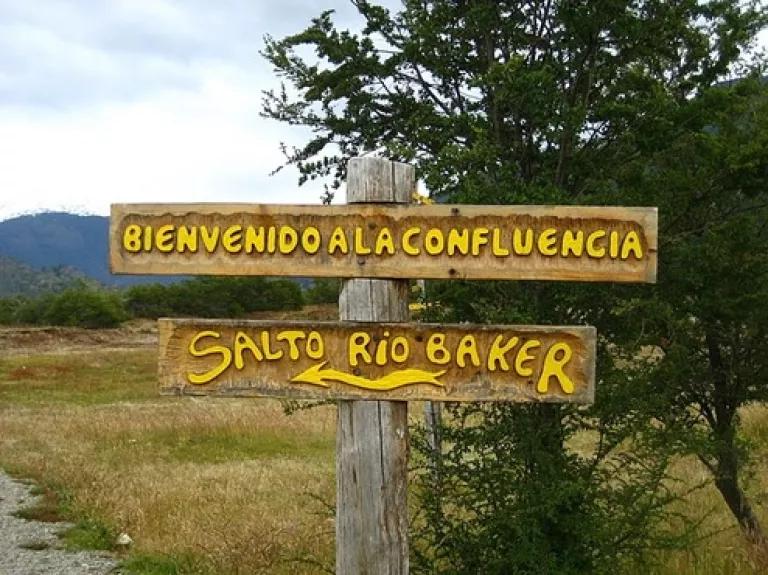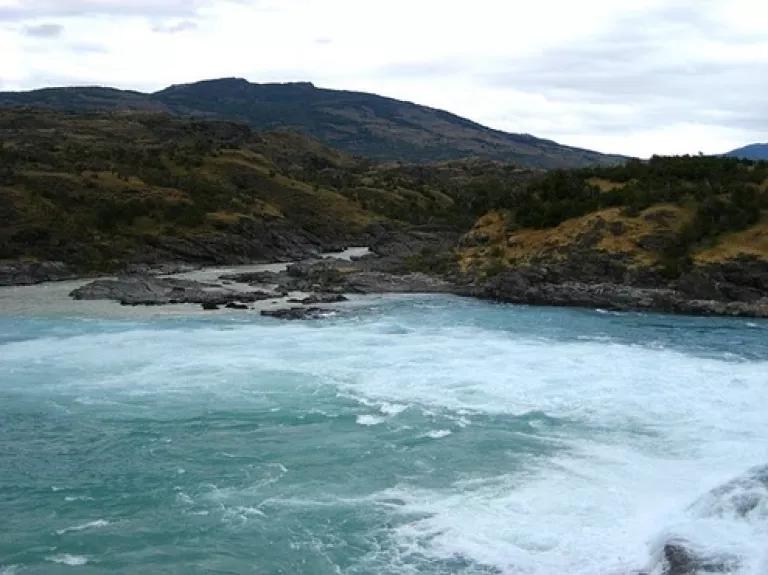
The first thing you notice about the Baker is its color: sometimes emerald, milky and translucent; at other times a crystal clear turquoise; but always, always striking. I learned from Brian Reid, a limnologist (a scientist who studies fresh water) and “El Capitán” of our group, that this color comes from the glacial till (the unassorted mixture of sediment) of the river’s sources, which are mostly glacially-fed lakes and tributaries.
The Baker is one of Patagonia’s major watersheds and fresh water resources. Beginning in the glacially-fed lakes of the Chilean Andes, it snakes through the region’s rugged terrain, meeting numerous tributaries along the way to its delta, which empties into an inlet near the tiny fishing village of Tortel. From there, the water flows through a series of other inlets and into the Gulf of Penas before meeting the Pacific Ocean.
The Baker is also one of the two rivers that HidroAysén, a private consortium of two of Chile’s largest generation companies, proposes to dam in order to build a massive hydroelectric plant in this pristine corner of the globe. HidroAysén plans to build two dams on the Baker on three on the Pascua; all five would have a combined annual generating capacity of 2750 MW. Since 2006, NRDC has been actively working with Chilean and international partners to protect Patagonia from this scheme.
The second thing you notice about the Baker is the power of its flow. No one would describe this river as lazy. Sometimes its surface can appear placid and flat, yet you can still easily see the current moving. And in a boat you can certainly feel it, particularly if you’re rowing the boat from one side of the river to the other, against the current. (I’ve still got the blisters to prove this.)
At other times, the surface is anything but calm, and then the force of the water is undeniable. The confluence of the Baker with the Nef River is just such a place.

To get there from the road, we hiked along a path for about ten minutes. Long before you see the rivers, you hear them. When you get up close to the water, you can see why a hydro company would consider building a dam here. The location is remote, and the air almost seems to buzz with energy.
Yet, I could not help but think that it would be pure tragedy for this roaring force of nature to become a reservoir, reduced to a quiet trickle of its former strength. For months now, I have studied and discussed all of the technical, scientific and economic reasons why these dams should not be built. I’ve memorized the amounts of mega-watts, kilowatt hours, percents, kilometers and dollars that prove HidroAysén’s energy would be unnecessary.
But this was the first time I could feel why this amazing place needs protection.

To look at this incredible resource and see nothing more than the amount of electricity it can provide—electricity that is not needed—is in fact to not see it at all.

